18 Feb2022
By Dawn Williams
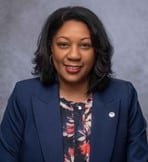 This post is part of AACTE’s Black History Month 2022 Blog series.
This post is part of AACTE’s Black History Month 2022 Blog series.
As we are nearing the end of another Black History Month, this year somehow feels different. On one hand the increased representation of diversity in marketing and corporate settings is promising. On the other hand, the resurgence of attacks on the use of school curriculum that represents diverse lived experiences is troubling. We find ourselves fighting a history of structural racism while also trying to safeguard our health against a global pandemic. However, what has not changed is our steadfast commitment to “balance the scales for the disenfranchised and promote an America that is devoid of inequalities.”
15 Feb2022
By Nicole Dunn
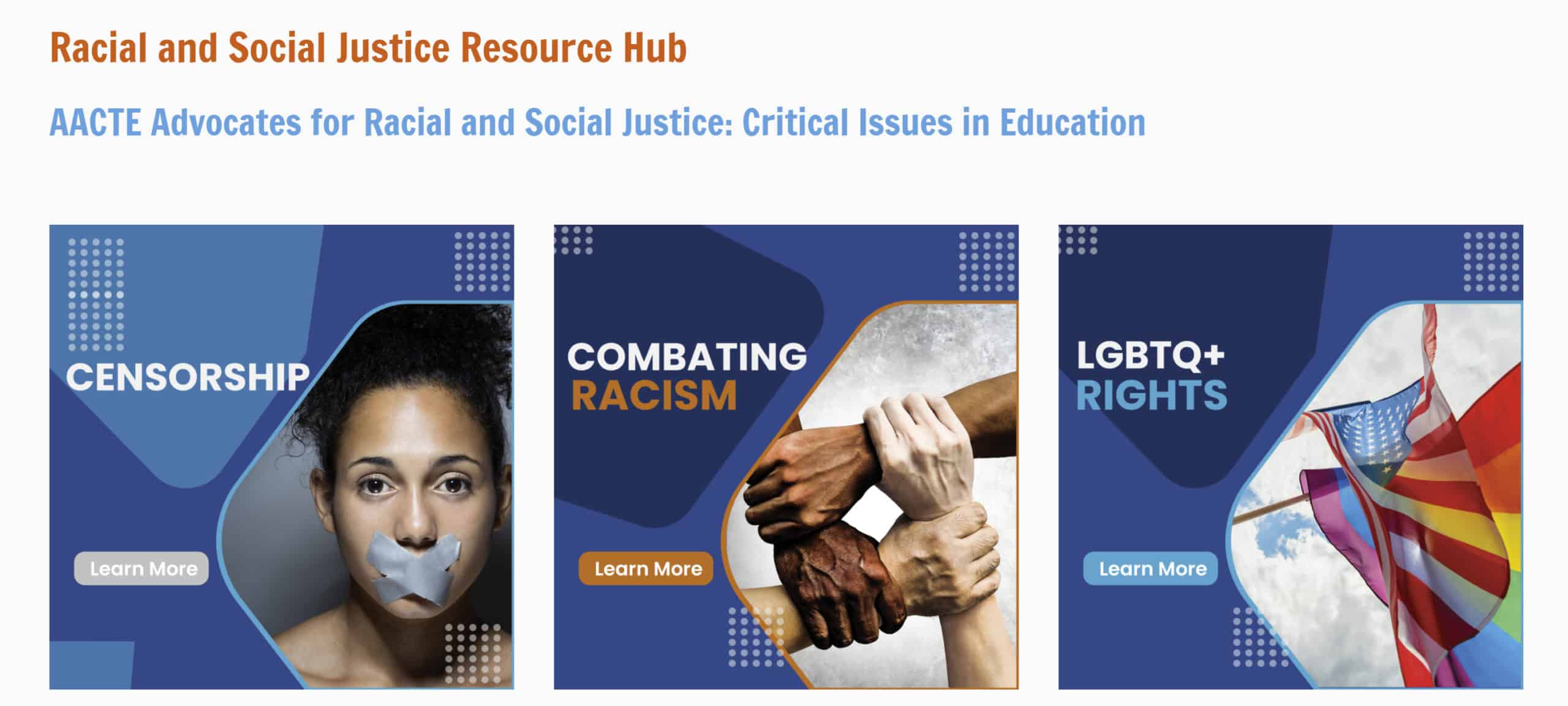 This month, AACTE launched its Racial and Social Justice Hub, a place to learn, grow, inquire, and share resources with one another that address social injustices and advocate for the preparation of profession-ready educators. To help ensure AACTE is meeting the needs of the educator preparation community in advancing racial and social justice work, you are invited to complete a 90-second survey to inform future content – it’s not for you, without you.
This month, AACTE launched its Racial and Social Justice Hub, a place to learn, grow, inquire, and share resources with one another that address social injustices and advocate for the preparation of profession-ready educators. To help ensure AACTE is meeting the needs of the educator preparation community in advancing racial and social justice work, you are invited to complete a 90-second survey to inform future content – it’s not for you, without you.
08 Feb2022
By Anthony Webster
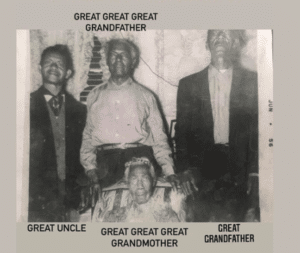
This post is part of AACTE’s Black History Month 2022 Blog series.
Every February, during Black History Month, we celebrate the countless contributions and achievements of notable Black inventors, educators, lawyers, and politicians from over the years. However, as I reflect, I remember to pay homage to the heroes and sheroes in my life who sacrificed to create a better tomorrow, from the Black teachers who inspired me during my PK-12 journey to the Black professors at my HBCU (Jackson State) who saw my potential and pushed me beyond my comfort zone. Because of them, I knew that getting to this point was possible.
08 Feb2022
By Nicole Dunn and Jacqueline Rodriguez
 AACTE is committed to tackling systematic censorship within our country’s education system, alongside our members and partners, and it does so through an intersectional lens.
AACTE is committed to tackling systematic censorship within our country’s education system, alongside our members and partners, and it does so through an intersectional lens.
As an organization whose mission is to revolutionize education for all learners, AACTE developed the Racial and Social Justice Resource Hub to be a place for members to learn, grow, inquire, and share resources with one another that address social injustices and advocate for the preparation of profession-ready educators.
The Hub includes three sections: Education Censorship, Combating Racism, and LGBTQ+ Rights. Each section offers resources created by AACTE and its members and strategic partners, including articles, webinars and workshops, curriculum tools, and calls for action. Considering the ongoing efforts underway that limit educators’ teaching and discussion of our nation’s history, and other so-called divisive topics, AACTE is encouraging members to engage with the Hub to support your own teaching and scholarship.
01 Feb2022
By Nicole Dunn

Join AACTE in celebrating Black History Month by sharing your favorite resources for teaching Black history at the Ed Prep or PK-12 level. AACTE will compile this shared knowledge as a toolkit for teaching Black history every month of the year. Please take a moment to share your resources.
This post is the first of AACTE’s weekly Black History Month 2022 Blog series to celebrate members’ essential efforts to increase the representation of Black History in America’s schools. As a kickoff to the celebration, AACTE is releasing, for a limited time to the public, a recording of AACTE’s 2021 Annual Meeting Deeper Dive session, The 1619 Project.
Founding director of the Smithsonian’s National Museum of African American History and Culture, Lonnie Bunch, describes the museum as a place that “transcends the boundaries of race and culture that divide us and becomes a lens into a story that unites us all.” That is a powerful statement, and one AACTE and its members strive to emulate as it celebrates Black History, not just this month, but every day as AACTE advocates for curriculum and policies that are representative of the country’s diverse history.
Black History Month began as an effort to increase the representation in history classes of Black people’s contributions to America’s society, culture, and progress as a nation. Its origin lies in the thesis of Carter G. Woodson. According to an adaption of the National Museum of American History’s blog exhibit on Dr. Woodson, he was challenged by his dissertation advisors, who, according to Dr. Woodson, cautioned him time and again not to “undertake research that the Negro had a history.” Woodson knew that education is essential to social change — and AACTE honors that as part of its mission.
27 Jan2022
By Marybeth Gasman

PHOTO CREDIT: VON HARRIS PRODUCTIONS
This article originally appeared in Forbes and is reprinted with permission.
In 2020, vast changes in higher education due to racial justice movements and the impact of Covid-19, resulted in colleges and universities clamoring to respond with diversity, equity, and inclusion (DEI) efforts. One aspect of this response came in the form of newly elected African American student body presidents and student leaders. Whereas the majority of these posts had been held by White students for decades, the “interlocking” of COVID-19 and racial justice turmoil prompted Black students to create platforms for change on their campuses, and as a result their classmates elected them to leadership positions.
25 Jan2022
By Margaret Gerry
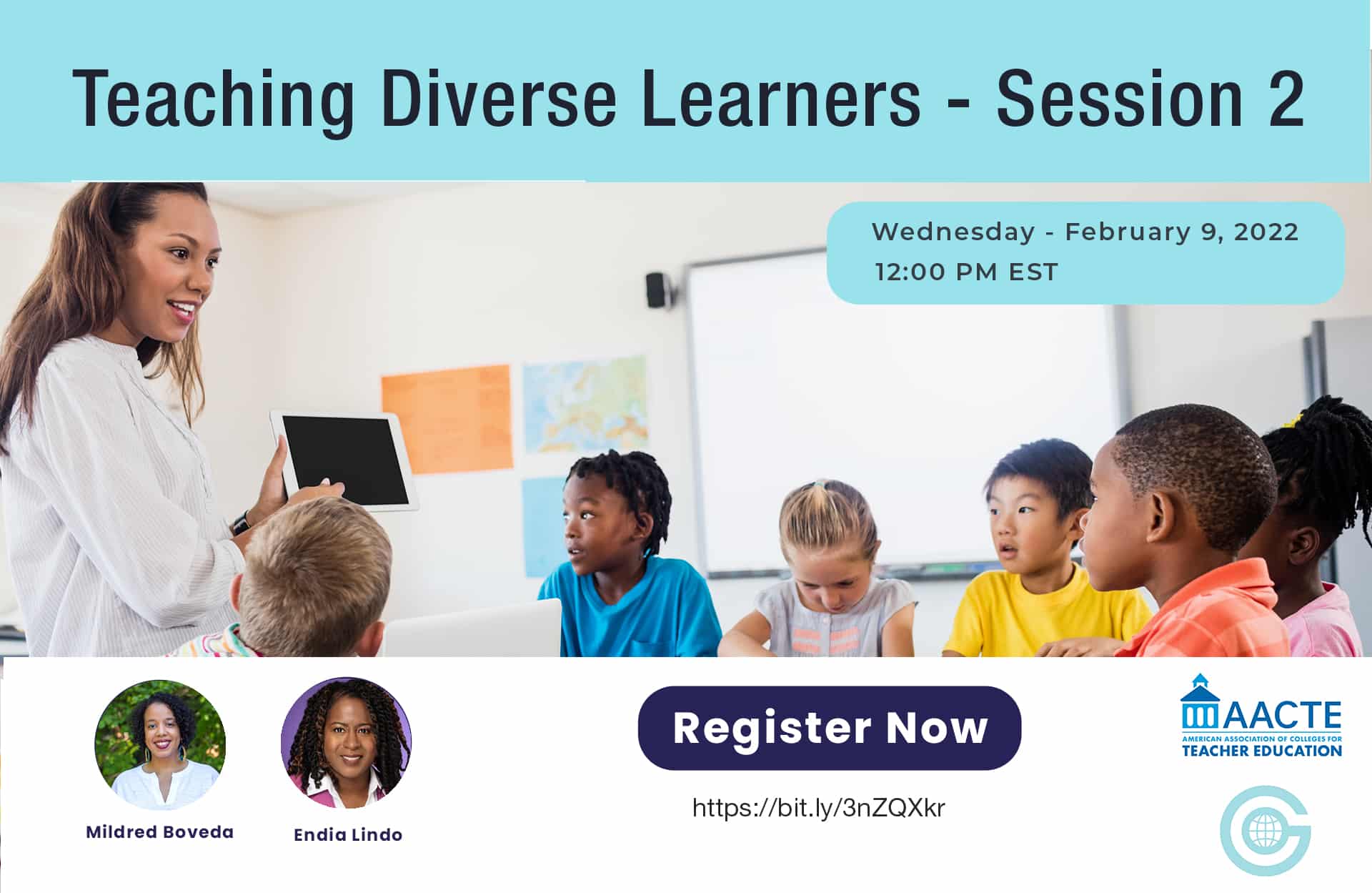 The current demographics in the United States public school workforce are not representative of all students in American classroom settings. Though American classroom settings continue to grow in diversity, the teaching workforce remains predominantly white, middle class, and female. These racial inequalities in classroom settings may lead to biases, stereotype threats, and a need for more inclusive environments, thereby impacting student experiences in school settings in areas such as grades, disciplinary referrals, and teacher expectations of students. Across the field of education, stakeholders, including AACTE, are attempting to diversify the field in an attempt to improve the ability of our current teaching workforce to support their students who have different experiences from their own. In an era where, in the United States, our classrooms have never been more diverse with students from multiple cultures, socio-economic levels, and students with disabilities, how can we best prepare teachers to support all students in classroom settings?
The current demographics in the United States public school workforce are not representative of all students in American classroom settings. Though American classroom settings continue to grow in diversity, the teaching workforce remains predominantly white, middle class, and female. These racial inequalities in classroom settings may lead to biases, stereotype threats, and a need for more inclusive environments, thereby impacting student experiences in school settings in areas such as grades, disciplinary referrals, and teacher expectations of students. Across the field of education, stakeholders, including AACTE, are attempting to diversify the field in an attempt to improve the ability of our current teaching workforce to support their students who have different experiences from their own. In an era where, in the United States, our classrooms have never been more diverse with students from multiple cultures, socio-economic levels, and students with disabilities, how can we best prepare teachers to support all students in classroom settings?
25 Jan2022
By Brian Blackley
In 2021, AACTE supported a federal application by the State of Tennessee and member institution Austin Peay State University (APSU) to create educator preparation-based Grow Your Own programs as acceptable apprenticeships for aspiring educators. After rigorous review and meetings with state and federal officials, AACTE endorsed the effort, which partners college or university educator preparation programs (EPPs) with local school districts to ensure teacher candidates are profession-ready upon entering the classroom.
Paving the way for teaching and educator workforce development nationwide, the Tennessee Department of Education announced it has pioneered a new way to develop teacher pipelines, and is the first state to be approved by the U.S. Department of Labor to establish a permanent Grow Your Own model, with Clarksville-Montgomery County School System and Austin Peay State University’s Teacher Residency program becoming the first registered apprenticeship program for teaching in the country. Tennessee is the first state in the country to sponsor Teacher Occupation Apprenticeship programs between school districts and Educator Preparation Programs (EPPs), which will further the state’s and nation’s efforts to extend the teacher pipeline and address teacher shortages.
25 Jan2022
By Nicole Dunn
 Since the historic SCOTUS ruling in 1982, Board of Education, Island Trees Union Free School District v. Pico, which ruled that school boards cannot remove books because they disagree with them, describing libraries as spaces of “voluntary inquiry,” book bans and challenges have continued. The education field is based upon the values of intellectual freedom that were upheld by this and other Supreme Court decisions; however, the executive director of the American Library Association’s Office for Intellectual Freedom recently stated in an interview, “We’re seeing an unprecedented volume of challenges.” While there is a formal “challenge” process for censoring information in libraries and curriculum, the enormous increase in political pressure has prompted some school districts to abandon their policies and begin pulling the books without undergoing this review process. As a result of not abiding by this process, which is legally reserved for challenging content that is “obscene,” books that overwhelmingly depict LGBTQ+ and BIPOC stories are removed from shelves, having been deemed “obscene” by local opinion.
Since the historic SCOTUS ruling in 1982, Board of Education, Island Trees Union Free School District v. Pico, which ruled that school boards cannot remove books because they disagree with them, describing libraries as spaces of “voluntary inquiry,” book bans and challenges have continued. The education field is based upon the values of intellectual freedom that were upheld by this and other Supreme Court decisions; however, the executive director of the American Library Association’s Office for Intellectual Freedom recently stated in an interview, “We’re seeing an unprecedented volume of challenges.” While there is a formal “challenge” process for censoring information in libraries and curriculum, the enormous increase in political pressure has prompted some school districts to abandon their policies and begin pulling the books without undergoing this review process. As a result of not abiding by this process, which is legally reserved for challenging content that is “obscene,” books that overwhelmingly depict LGBTQ+ and BIPOC stories are removed from shelves, having been deemed “obscene” by local opinion.
18 Jan2022
By Margaret Gerry
 The current and historical public-school workforce in the United States remains predominantly white, middle class, and female; however, these demographics have never accurately represented all students in American classroom settings, which continue to grow in diversity. Classrooms are a place where the presence of biases, stereotype threats, and need for more inclusive environments resulting from differences between the demographics and lived experiences of the teaching workforce and students exist. While AACTE and other education stakeholders are taking up efforts to diversify the field, it is essential to improve the ability of our current educator workforce. In the United States, our classrooms have never been more diverse with students from multiple cultures, socio-economic levels, and disabilities. Thus, the essential question remains: How can we best prepare teachers to support all students in our classroom settings?
The current and historical public-school workforce in the United States remains predominantly white, middle class, and female; however, these demographics have never accurately represented all students in American classroom settings, which continue to grow in diversity. Classrooms are a place where the presence of biases, stereotype threats, and need for more inclusive environments resulting from differences between the demographics and lived experiences of the teaching workforce and students exist. While AACTE and other education stakeholders are taking up efforts to diversify the field, it is essential to improve the ability of our current educator workforce. In the United States, our classrooms have never been more diverse with students from multiple cultures, socio-economic levels, and disabilities. Thus, the essential question remains: How can we best prepare teachers to support all students in our classroom settings?
10 Jan2022
By Mary Churchill
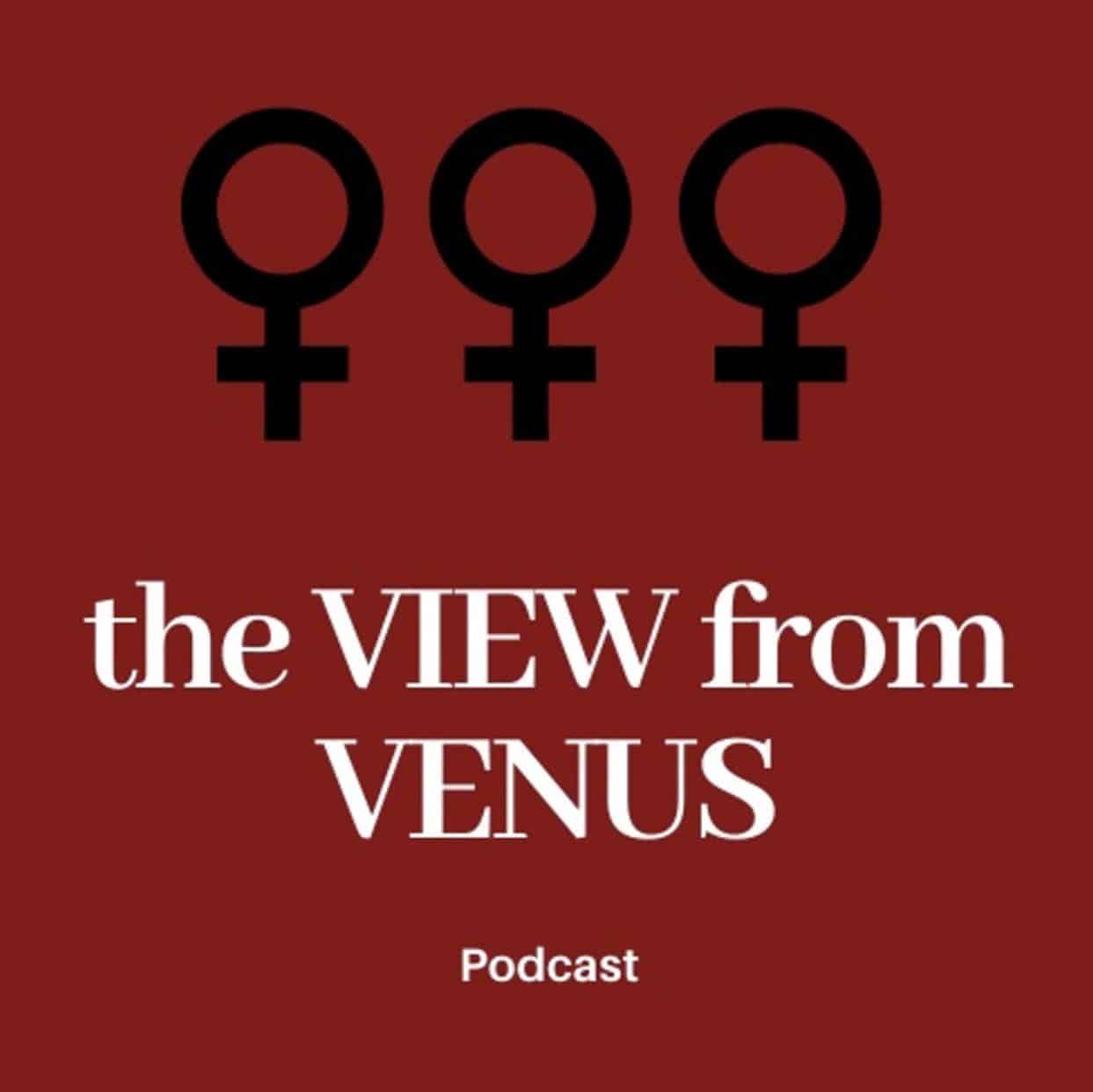
This article originally appeared Inside Higher Education and is reprinted with permission.
In December, we were able to publish a four-episode late-fall season for our podcast “View From Venus.” We had some phenomenal women as guests: Jacqueline Rodriguez, vice president at the American Association of Colleges for Teacher Education; Shana MacDonald, faculty member at the University of Waterloo; Becky Petitt, vice chancellor at UC San Diego; and Felecia Commodore, faculty member at Old Dominion University.
We have hosted conversations with college presidents, faculty members, staff members, artists, politicians, activists and entrepreneurs—all amazing women doing great work. One goal of the podcast is to lift up, amplify and celebrate this great work and share it with a larger audience. It is also about building connections and introducing the world to these women and the differences they are making in the world.
21 Dec2021
By Rebecca Griesbach
This article originally appeared on AL.com and is reprinted with permission.
When Wesley Lindsey first met his fourth-grade student, the boy, who is also Black, was reading on a preschool level.
Other teachers had referred the student to special education numerous times and wouldn’t even let him walk in the hallway alone due to behavioral problems.
From fall to spring, Lindsey managed to coach the young boy to nearly a third-grade level. The behavior problems stopped, and the student started mimicking Lindsey in the classroom, telling other students to quiet down and do their work.
03 Dec2021
By Rangasamy Ramasamy
This opinion article originally appeared in Diverse Issues in Higher Education and is reprinted with permission.
 The demographics of our nation’s PK-12 student body are changing. In fact, a report from the National Center for Educational Statistics (NCES, 2019 as cited in Burden, 2020) projects that by 2027 the Caucasian student population will decrease to 45%, Latinx student population will increase to 29%, and the African American student population will remain at 15%. Thus, tomorrow’s student body will be more diverse than today and that trend is expected to continue. To meet the needs of the future PK-12 student population, educator preparation programs (EPPs) must attract a greater number of diverse candidates to the teaching profession—and that requires advocating for policies that promote diversity in the classroom and address critical teacher shortages.
The demographics of our nation’s PK-12 student body are changing. In fact, a report from the National Center for Educational Statistics (NCES, 2019 as cited in Burden, 2020) projects that by 2027 the Caucasian student population will decrease to 45%, Latinx student population will increase to 29%, and the African American student population will remain at 15%. Thus, tomorrow’s student body will be more diverse than today and that trend is expected to continue. To meet the needs of the future PK-12 student population, educator preparation programs (EPPs) must attract a greater number of diverse candidates to the teaching profession—and that requires advocating for policies that promote diversity in the classroom and address critical teacher shortages.
24 Nov2021
By Tammy Moore
AACTE’s Consortium for Research-Based and Equitable Assessments (CREA) project recently released a framing paper titled The History, Current Use, and Impact of Entrance and Licensure Examinations Cut Scores on the Teacher-of-Color Pipeline: A Structural Racism Analysis. The paper addressed the following questions: (1) How are standardized entrance and licensure tests being used as a gateway into the profession? (2) Who determines cut scores for these tests? and (3) What is the historical significance and implications of these tests on the diversity of the profession today?
Lindenwood University represents one of fourteen lead institutions that comprise the CREA project. Tammy Moore, director of certification and field/clinical experiences at Lindenwood, reflects on the effects of entrance assessment requirements at her institution and her institution’s plans to ensure equitable access for all students who choose to pursue teacher education.
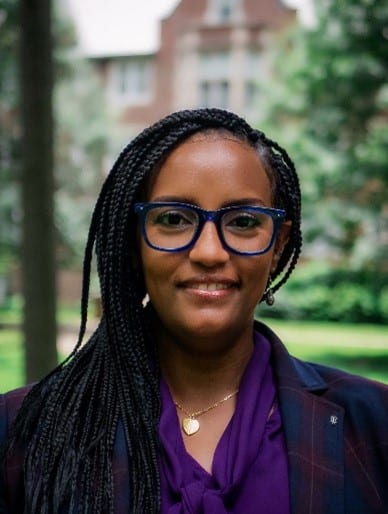 Why did Lindenwood University pursue membership in the CREA project?
Why did Lindenwood University pursue membership in the CREA project?
Lindenwood University – College of Education and Human Services (COEHS) pursued the CREA project to participate in an initiative designed to support our continual efforts to recruit and retain teacher candidates of color. In direct alignment with Lindenwood COEHS commitment to “… an open, diverse, and inclusive learning environment that nurtures the growth and development of all …” the CREA project embodies our commitment to diversifying the teaching profession.
15 Nov2021
By Lana Collet-Klingenberg
AACTE’s Consortium for Research-Based and Equitable Assessments (CREA) project recently released a framing paper titled The History, Current Use, and Impact of Entrance and Licensure Examinations Cut Scores on the Teacher-of-Color Pipeline: A Structural Racism Analysis. The paper addressed the following questions: (1) How are standardized entrance and licensure tests being used as a gateway into the profession? (2) Who determines cut scores for these tests?, and (3) What is the historical significance and implications of these tests on the diversity of the profession today?
University of Wisconsin-Whitewater (UWW) represents one of fourteen lead institutions that comprise the CREA project. Lana Collet-Klingenberg, professor and interim associate dean at UWW recently reflected on the effects of entrance assessment requirements at her institution and her institution’s plans to ensure equitable access for all students who choose to pursue teacher education.
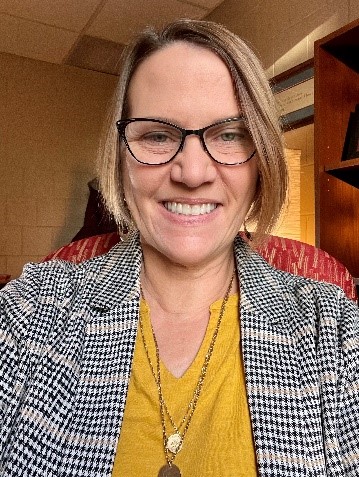 Why did University of Wisconsin – Whitewater pursue membership in the CREA project?
Why did University of Wisconsin – Whitewater pursue membership in the CREA project?
Increasing the diversity in our educator workforce is a high priority for our state and our institution. By many measures Wisconsin is failing when it comes to equity in our schools and in our educator workforce. As the EPP that prepares the most first-time licensed teachers in the state, we are interested in any initiative that advances the cause. In addition, in an effort to lessen the number of barriers for prospective teachers, our state changed rule, providing EPP with flexibility regarding what measures we use for admission. In our state, students can meet requirements with GPA OR test scores. Our state is continuing to address removal of barriers by recently changing rule again to allow for alternate measures to GPA for licensure (which, in turn, will allow greater flexibility with admission requirements). I believe our inclusion in the project is a means of sharing these avenues with states still requiring standardized test performance as the primary admission pathway.
 This post is part of AACTE’s Black History Month 2022 Blog series.
This post is part of AACTE’s Black History Month 2022 Blog series.
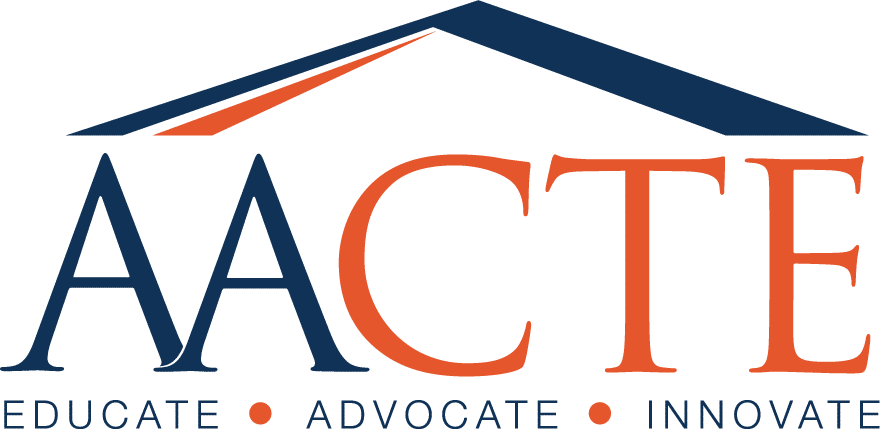





 This month, AACTE launched its
This month, AACTE launched its 


 The current demographics in the United States public school workforce are not representative of all students in American classroom settings. Though American classroom settings continue to grow in diversity, the teaching workforce remains predominantly white, middle class, and female. These racial inequalities in classroom settings may lead to biases, stereotype threats, and a need for more inclusive environments, thereby impacting student experiences in school settings in areas such as grades, disciplinary referrals, and teacher expectations of students. Across the field of education, stakeholders, including AACTE, are attempting to diversify the field in an attempt to improve the ability of our current teaching workforce to support their students who have different experiences from their own. In an era where, in the United States, our classrooms have never been more diverse with students from multiple cultures, socio-economic levels, and students with disabilities, how can we best prepare teachers to support all students in classroom settings?
The current demographics in the United States public school workforce are not representative of all students in American classroom settings. Though American classroom settings continue to grow in diversity, the teaching workforce remains predominantly white, middle class, and female. These racial inequalities in classroom settings may lead to biases, stereotype threats, and a need for more inclusive environments, thereby impacting student experiences in school settings in areas such as grades, disciplinary referrals, and teacher expectations of students. Across the field of education, stakeholders, including AACTE, are attempting to diversify the field in an attempt to improve the ability of our current teaching workforce to support their students who have different experiences from their own. In an era where, in the United States, our classrooms have never been more diverse with students from multiple cultures, socio-economic levels, and students with disabilities, how can we best prepare teachers to support all students in classroom settings? Since the historic SCOTUS ruling in 1982,
Since the historic SCOTUS ruling in 1982,  The current and historical public-school workforce in the United States remains predominantly white, middle class, and female; however, these demographics have never accurately represented all students in American classroom settings, which continue to grow in diversity. Classrooms are a place where the presence of biases, stereotype threats, and need for more inclusive environments resulting from differences between the demographics and lived experiences of the teaching workforce and students exist. While AACTE and other education stakeholders are taking up efforts to diversify the field, it is essential to improve the ability of our current educator workforce. In the United States, our classrooms have never been more diverse with students from multiple cultures, socio-economic levels, and disabilities. Thus, the essential question remains: How can we best prepare teachers to support all students in our classroom settings?
The current and historical public-school workforce in the United States remains predominantly white, middle class, and female; however, these demographics have never accurately represented all students in American classroom settings, which continue to grow in diversity. Classrooms are a place where the presence of biases, stereotype threats, and need for more inclusive environments resulting from differences between the demographics and lived experiences of the teaching workforce and students exist. While AACTE and other education stakeholders are taking up efforts to diversify the field, it is essential to improve the ability of our current educator workforce. In the United States, our classrooms have never been more diverse with students from multiple cultures, socio-economic levels, and disabilities. Thus, the essential question remains: How can we best prepare teachers to support all students in our classroom settings?
 The demographics of our nation’s PK-12 student body are changing. In fact, a
The demographics of our nation’s PK-12 student body are changing. In fact, a  Why did Lindenwood University pursue membership in the CREA project?
Why did Lindenwood University pursue membership in the CREA project?  Why did University of Wisconsin – Whitewater pursue membership in the CREA project?
Why did University of Wisconsin – Whitewater pursue membership in the CREA project?